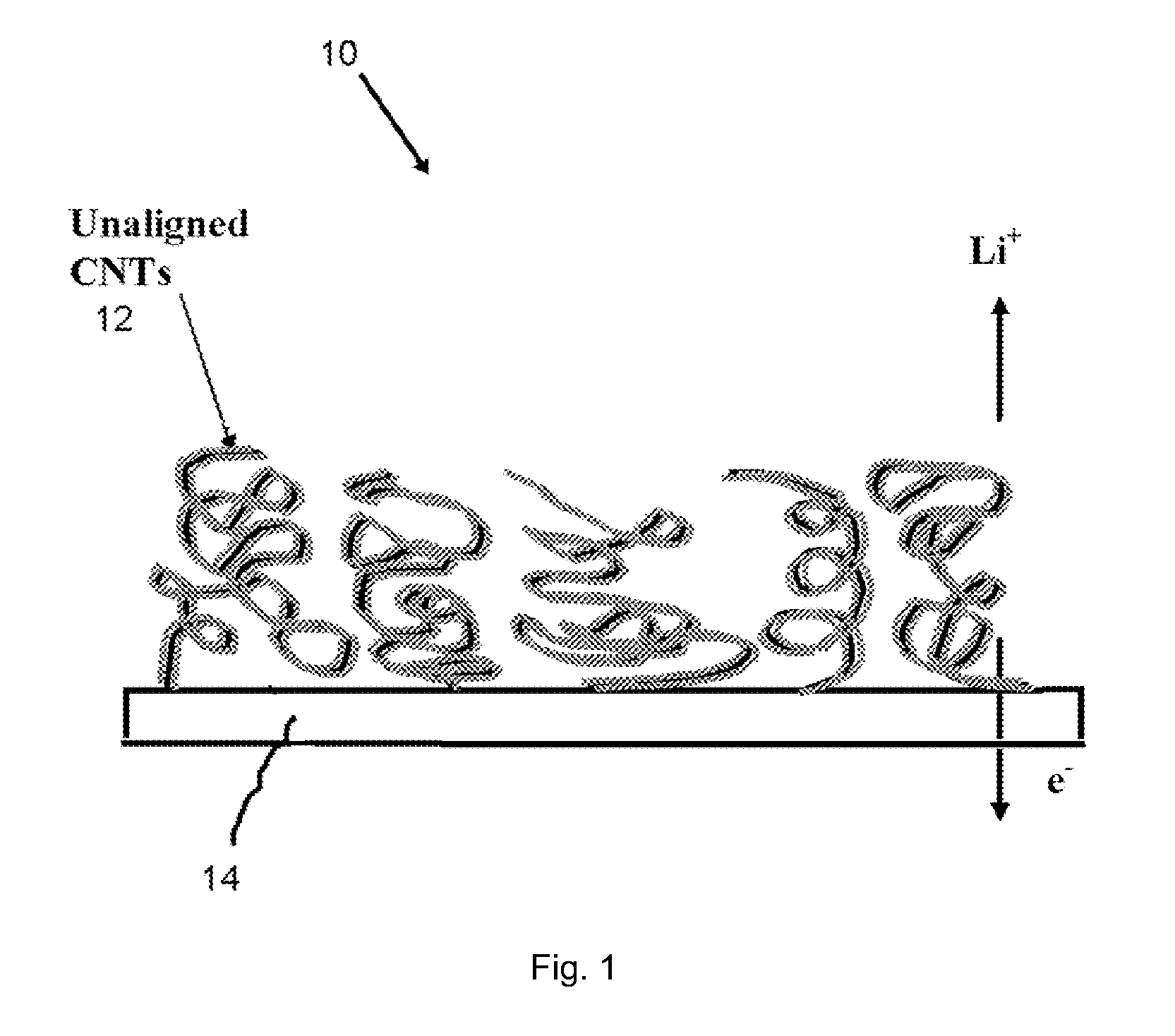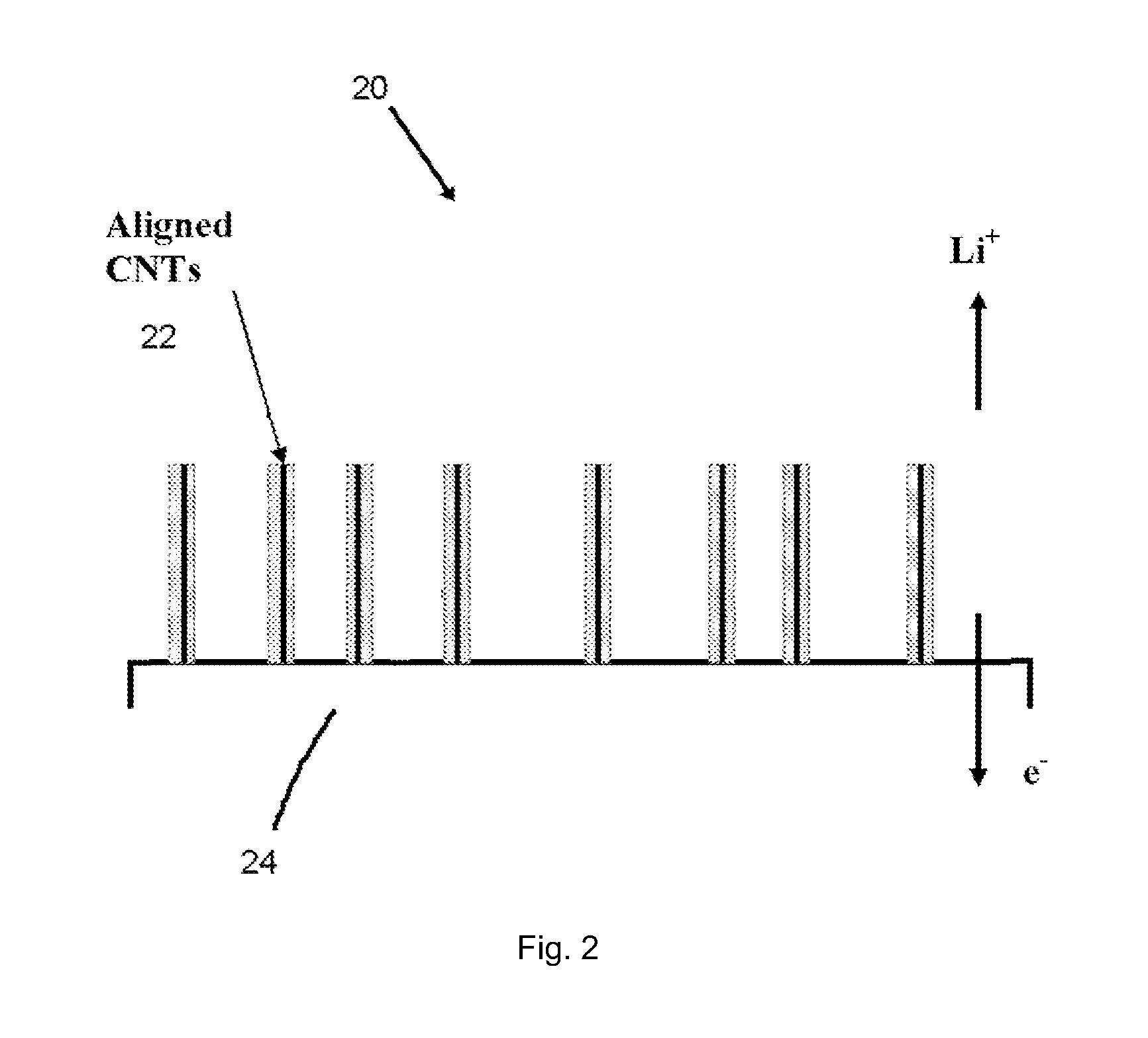Carbon Nanotube Augmented Sulfur Cathode for an Elemental Sulfur Battery
a technology of elemental sulfur and carbon nanotubes, which is applied in the manufacture of electrodes, cell components, coatings, etc., can solve the problems of limiting battery performance, internal resistance of the battery, and difficult to incorporate elemental sulfur in the cathode of the battery, so as to improve the storage density, increase and improve the effect of electrical and thermal conductivity
- Summary
- Abstract
- Description
- Claims
- Application Information
AI Technical Summary
Benefits of technology
Problems solved by technology
Method used
Image
Examples
Embodiment Construction
[0017]In an embodiment, the present invention discloses a vertically aligned carbon nanotube (CNT) augmented electrode, to be used as a base for a lithium ion anode or an elemental sulfur cathode, to improve the performance of a lithium ion battery, and allows the repeated discharging and recharging (cycling) of a lithium ion battery.
[0018]In an embodiment, the present invention discloses an electrode (such as an anode or a cathode) augmented with carbon nanotubes, allowing both the improved storage density of lithium ions, over existing lithium salts, and the increase electrical and thermal conductivity. Carbon nanotubes offer high strength-to-weight ratios and superior mechanical properties, in additional to excellent electrical conductivity. CNTs can be grown on the surface of a metal collector, to produce nanoscale composites to be used as electrodes in battery, magnetic storage, fuel cell, and composite applications. Carbon nanotubes or carbon nanofibers have excellent electric...
PUM
| Property | Measurement | Unit |
|---|---|---|
| lengths | aaaaa | aaaaa |
| flexible | aaaaa | aaaaa |
| current | aaaaa | aaaaa |
Abstract
Description
Claims
Application Information
 Login to View More
Login to View More - R&D
- Intellectual Property
- Life Sciences
- Materials
- Tech Scout
- Unparalleled Data Quality
- Higher Quality Content
- 60% Fewer Hallucinations
Browse by: Latest US Patents, China's latest patents, Technical Efficacy Thesaurus, Application Domain, Technology Topic, Popular Technical Reports.
© 2025 PatSnap. All rights reserved.Legal|Privacy policy|Modern Slavery Act Transparency Statement|Sitemap|About US| Contact US: help@patsnap.com



